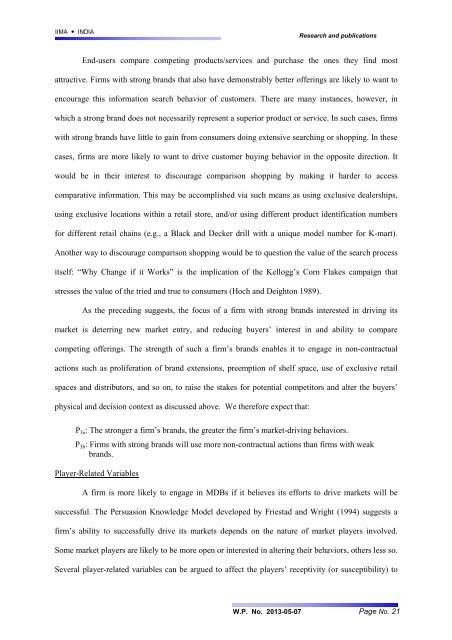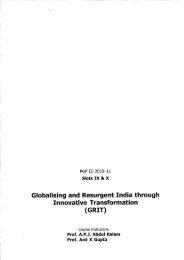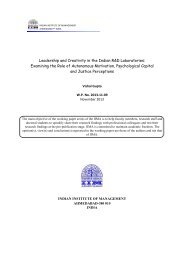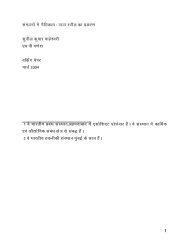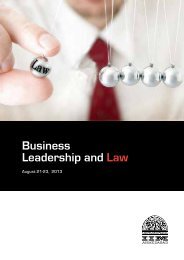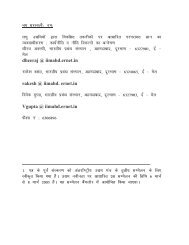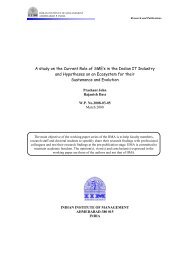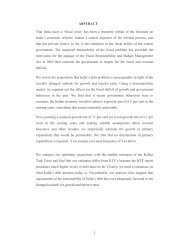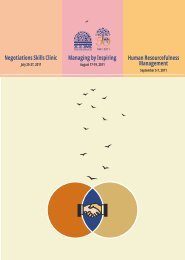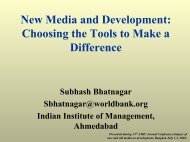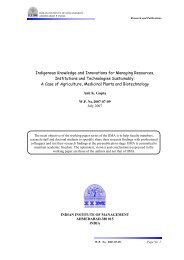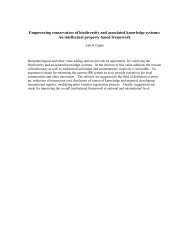to Download (English) File - Indian Institute of Management ...
to Download (English) File - Indian Institute of Management ...
to Download (English) File - Indian Institute of Management ...
Create successful ePaper yourself
Turn your PDF publications into a flip-book with our unique Google optimized e-Paper software.
IIMA INDIA<br />
Research and publications<br />
End-users compare competing products/services and purchase the ones they find most<br />
attractive. Firms with strong brands that also have demonstrably better <strong>of</strong>ferings are likely <strong>to</strong> want <strong>to</strong><br />
encourage this information search behavior <strong>of</strong> cus<strong>to</strong>mers. There are many instances, however, in<br />
which a strong brand does not necessarily represent a superior product or service. In such cases, firms<br />
with strong brands have little <strong>to</strong> gain from consumers doing extensive searching or shopping. In these<br />
cases, firms are more likely <strong>to</strong> want <strong>to</strong> drive cus<strong>to</strong>mer buying behavior in the opposite direction. It<br />
would be in their interest <strong>to</strong> discourage comparison shopping by making it harder <strong>to</strong> access<br />
comparative information. This may be accomplished via such means as using exclusive dealerships,<br />
using exclusive locations within a retail s<strong>to</strong>re, and/or using different product identification numbers<br />
for different retail chains (e.g., a Black and Decker drill with a unique model number for K-mart).<br />
Another way <strong>to</strong> discourage comparison shopping would be <strong>to</strong> question the value <strong>of</strong> the search process<br />
itself: “Why Change if it Works” is the implication <strong>of</strong> the Kellogg’s Corn Flakes campaign that<br />
stresses the value <strong>of</strong> the tried and true <strong>to</strong> consumers (Hoch and Deigh<strong>to</strong>n 1989).<br />
As the preceding suggests, the focus <strong>of</strong> a firm with strong brands interested in driving its<br />
market is deterring new market entry, and reducing buyers’ interest in and ability <strong>to</strong> compare<br />
competing <strong>of</strong>ferings. The strength <strong>of</strong> such a firm’s brands enables it <strong>to</strong> engage in non-contractual<br />
actions such as proliferation <strong>of</strong> brand extensions, preemption <strong>of</strong> shelf space, use <strong>of</strong> exclusive retail<br />
spaces and distribu<strong>to</strong>rs, and so on, <strong>to</strong> raise the stakes for potential competi<strong>to</strong>rs and alter the buyers’<br />
physical and decision context as discussed above. We therefore expect that:<br />
P 3a : The stronger a firm’s brands, the greater the firm’s market-driving behaviors.<br />
P 3b : Firms with strong brands will use more non-contractual actions than firms with weak<br />
brands.<br />
Player-Related Variables<br />
A firm is more likely <strong>to</strong> engage in MDBs if it believes its efforts <strong>to</strong> drive markets will be<br />
successful. The Persuasion Knowledge Model developed by Friestad and Wright (1994) suggests a<br />
firm’s ability <strong>to</strong> successfully drive its markets depends on the nature <strong>of</strong> market players involved.<br />
Some market players are likely <strong>to</strong> be more open or interested in altering their behaviors, others less so.<br />
Several player-related variables can be argued <strong>to</strong> affect the players’ receptivity (or susceptibility) <strong>to</strong><br />
W.P. No. 2013-05-07 Page No. 21


